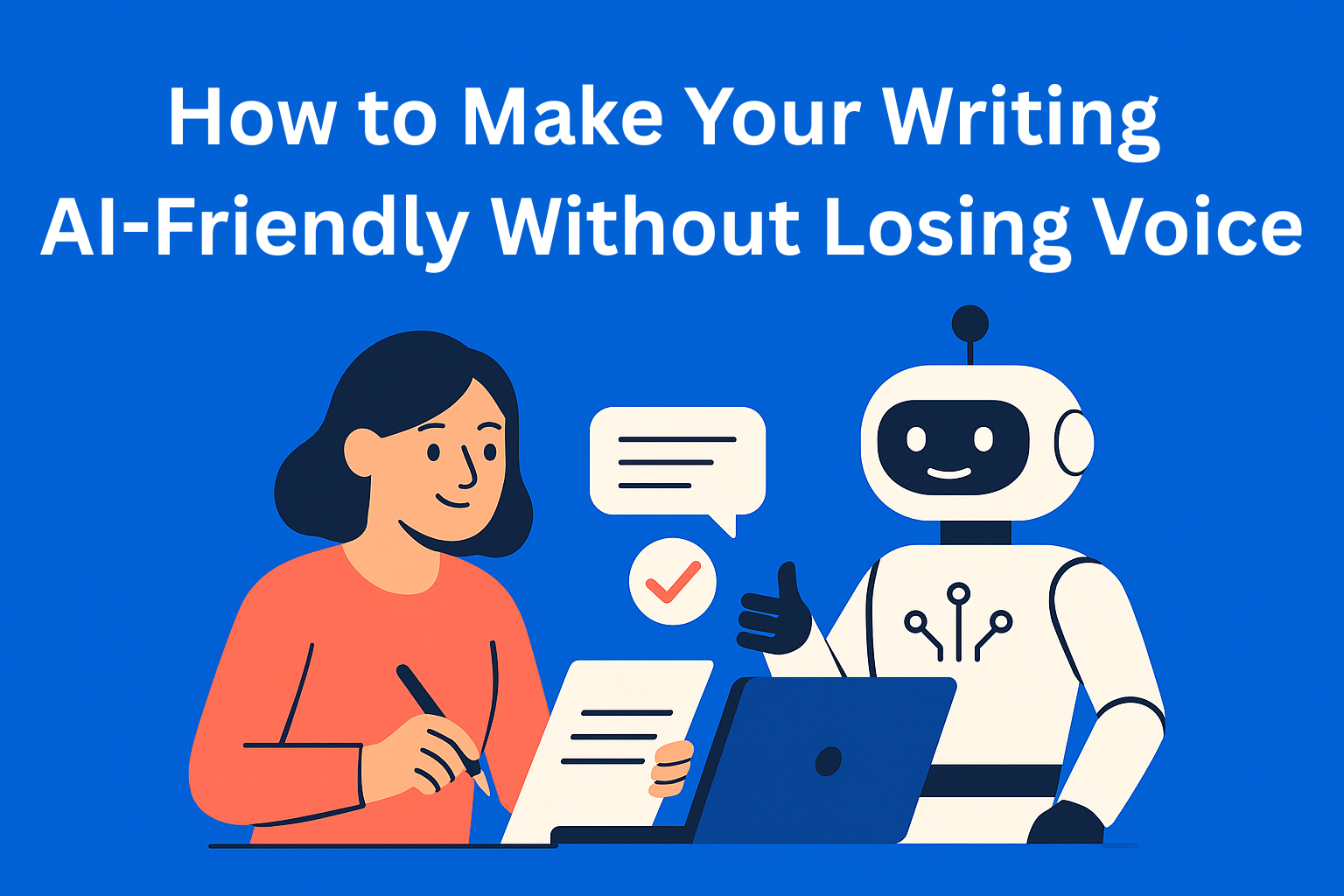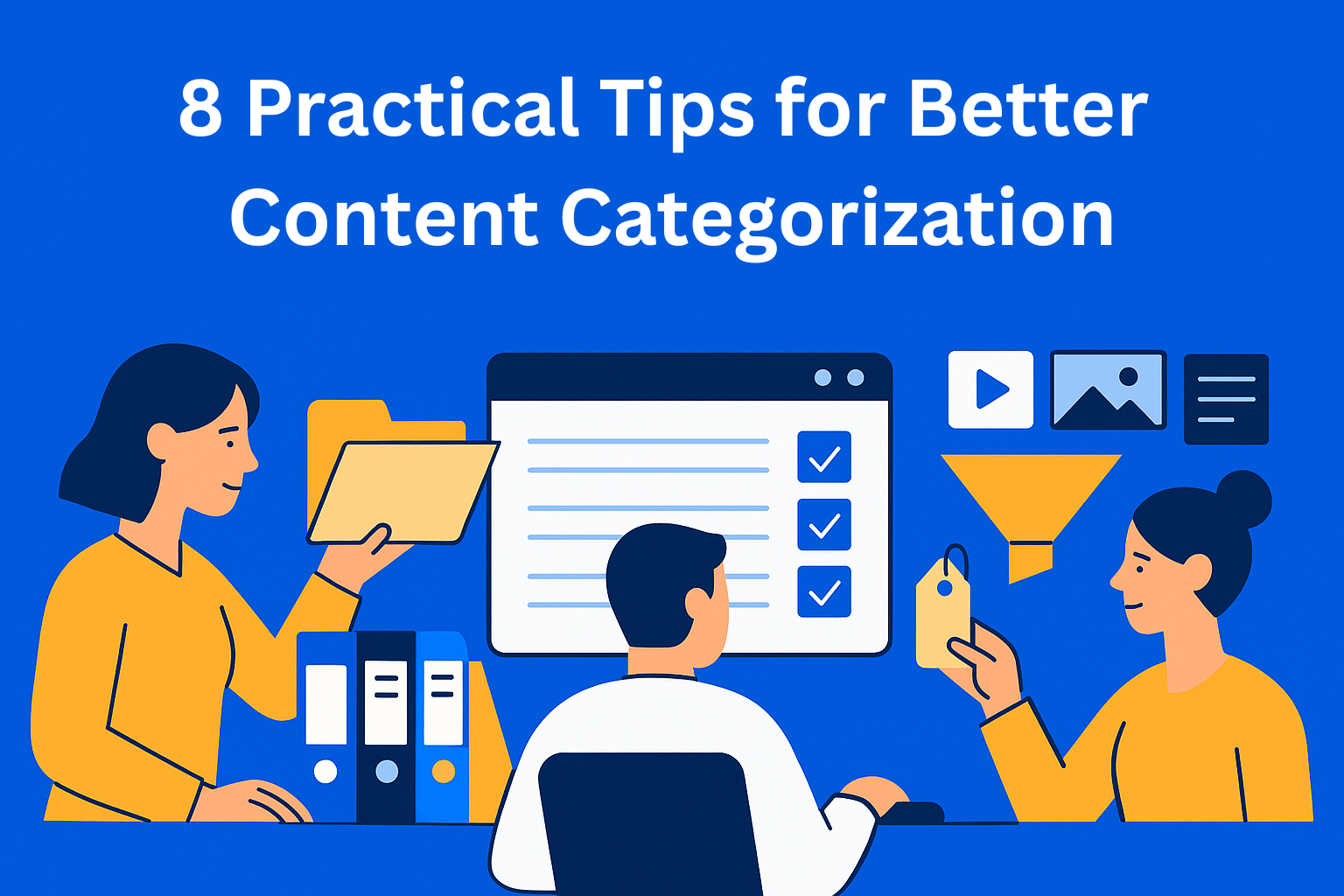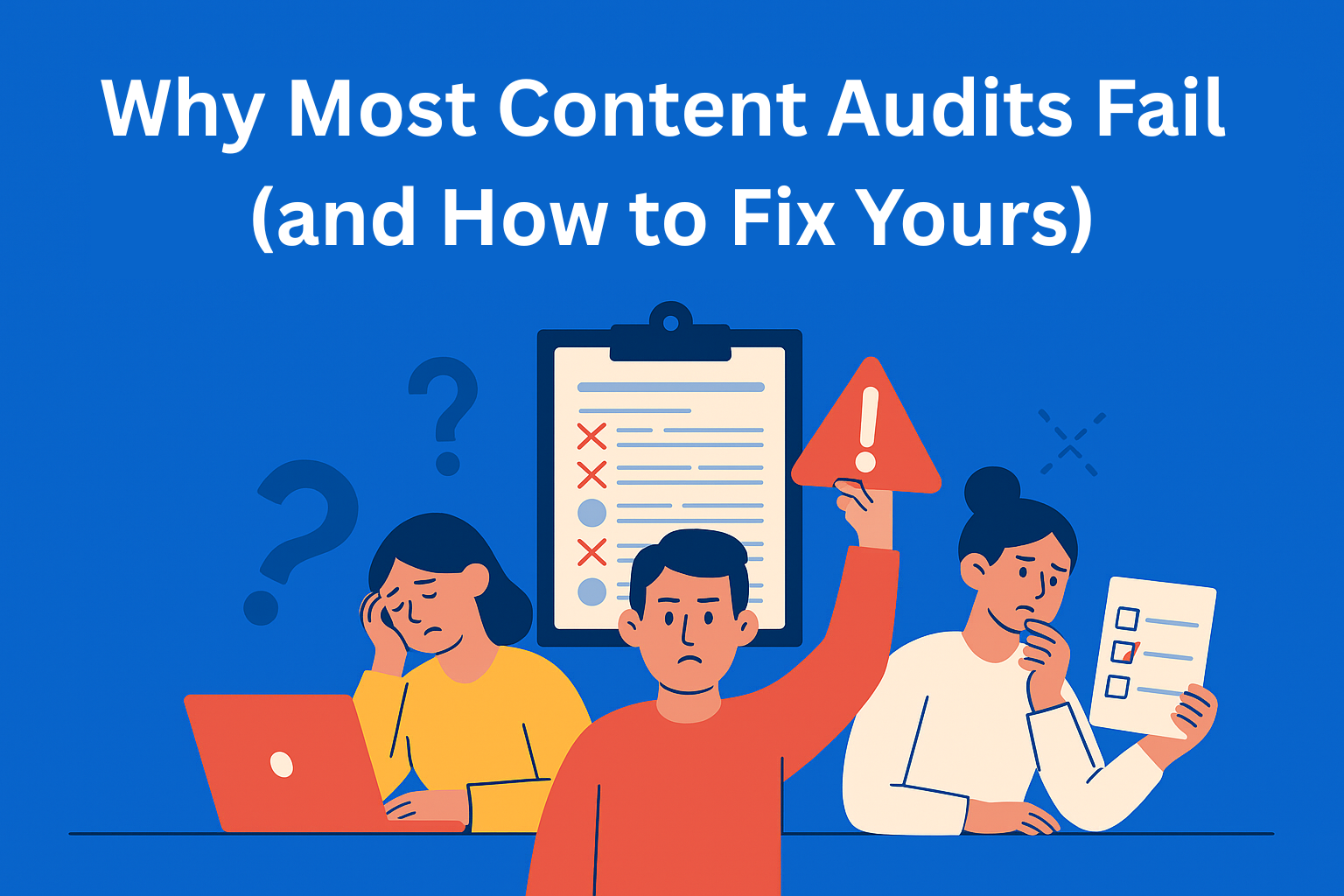How to Make Your Narrative AI-Friendly Without Losing Personality
You don’t need to strip personality to be AI-friendly. With the right structure and narrative anchors, your voice stays human while AI can clearly understand (and reference) your content.

Writers hear “optimize for AI” and immediately picture their voice getting squeezed into generic text. The fear makes sense - a lot of AI-optimized writing does sound like it was produced in a laboratory vacuum.
But the problem isn’t the optimization.
It’s the flattening.
Good AI-friendly writing doesn’t remove personality - it frames it so models can understand it. If your voice is the food, structure is the plate it sits on. Without the plate, the food just spills everywhere.
Key Takeaways
- Structure isn’t the enemy of voice - it’s what lets it shine. Think of formatting as the plate your personality sits on.
- AI needs signals. Humans need flow. Markers like clear theses, takeaways, and recognizable entities help models make sense of your story.
- You don’t remove voice - you frame it. Narrative anchors (like named tools, summaries, definitions) help models detect topic and intent.
- Write naturally, then scaffold. Add structure after the draft, don’t start with robot-speak. Clarify, don’t sterilize.
- EasyContent builds this in. With templates, structured fields, and character limits, your content becomes AI-ready by default.
AI Needs Signals. Humans Need Story.
Humans can infer meaning from subtext. AI can’t - unless you surface the signal.
When a model tries to interpret your text, it’s looking for:
- What is this about?
- What is the takeaway?
- Where does the author’s expertise show up?
When those elements are buried under clever phrasing or too much “voice,” the model has to guess - and when AI has to guess, it moves on to someone easier to parse.
You Don’t Fix That by Killing Voice - You Fix It by Framing It
The best narrative writing keeps its personality, but it sets up small “markers” that help AI understand what’s happening in the text.
Think of these as signposts:
- A clear thesis (even implied, but surfaced early enough)
- Distinct turns in the argument
- Occasional “here is the takeaway” moments
- Entities and references that the model recognizes
Humans read for flow.
AI reads for structure.
Your job is to serve both.
Practical Ways to Keep Personality and Clarity
Here’s what this balance looks like in practice:
1. Start with the human voice, then scaffold it
Write the paragraph naturally first. Then layer small clarifiers - a keyword, a clearer subject reference, a connective sentence.
2. Anchor abstract ideas in something the model can classify
If you say “content chaos,” that’s colorful. But pairing it with a concrete concept like “lack of documented workflow” makes it legible to AI.
3. Add takeaways without breaking tone
You don’t need a neon sign. A single sentence that begins with “What this really means is…” is enough for a model to latch onto.
“Narrative Anchors” - The Trick Nobody Talks About
Narrative anchors are subtle touchpoints that help AI detect:
- Topic
- Intent
- Scope
- Expertise
It could be:
- A line summarizing what the section teaches
- A named entity (tool, framework, role, methodology)
- A quick definition before you riff on the concept
You still get to write like you - you’re just giving AI a foothold so it doesn’t strip the meaning into something generic.
Where EasyContent Helps With This
Balancing personality and structure gets a lot easier when your writing process already includes built‑in scaffolding. With EasyContent, you don’t just write your draft - you write it inside a system that helps you optimize for both humans and machines.
How it works:
- Use customizable templates for different content types - create your perfect structure with the right headings, fields, and instructions baked in.
- Templates include options for structured fields, dropdowns, checkboxes, asset libraries, and guidelines - so you can help your writers always know exactly what to fill out and how.
- You can impose word and character count limits, which helps keep paragraphs clear and concise (a big win for AI parsing).
- Everything lives in one platform (workflow, review, assets) so the structure doesn’t vanish once you move into editing or publishing.
In short: EasyContent gives your voice a reliable frame. When you have structure, it's easy to write for both humans and AI.
Conclusion
Making your narrative AI-friendly isn’t about sanding down personality - it’s about giving shape to it. When the signal is clear, the voice becomes amplified, not diluted. Clarity simply gives your writing a backbone: a way for both humans and models to know what you’re actually saying, not just how cleverly you said it.
AI doesn’t reward dryness - it rewards recognizability. The structure is what lets the personality shine without getting lost in the noise.






